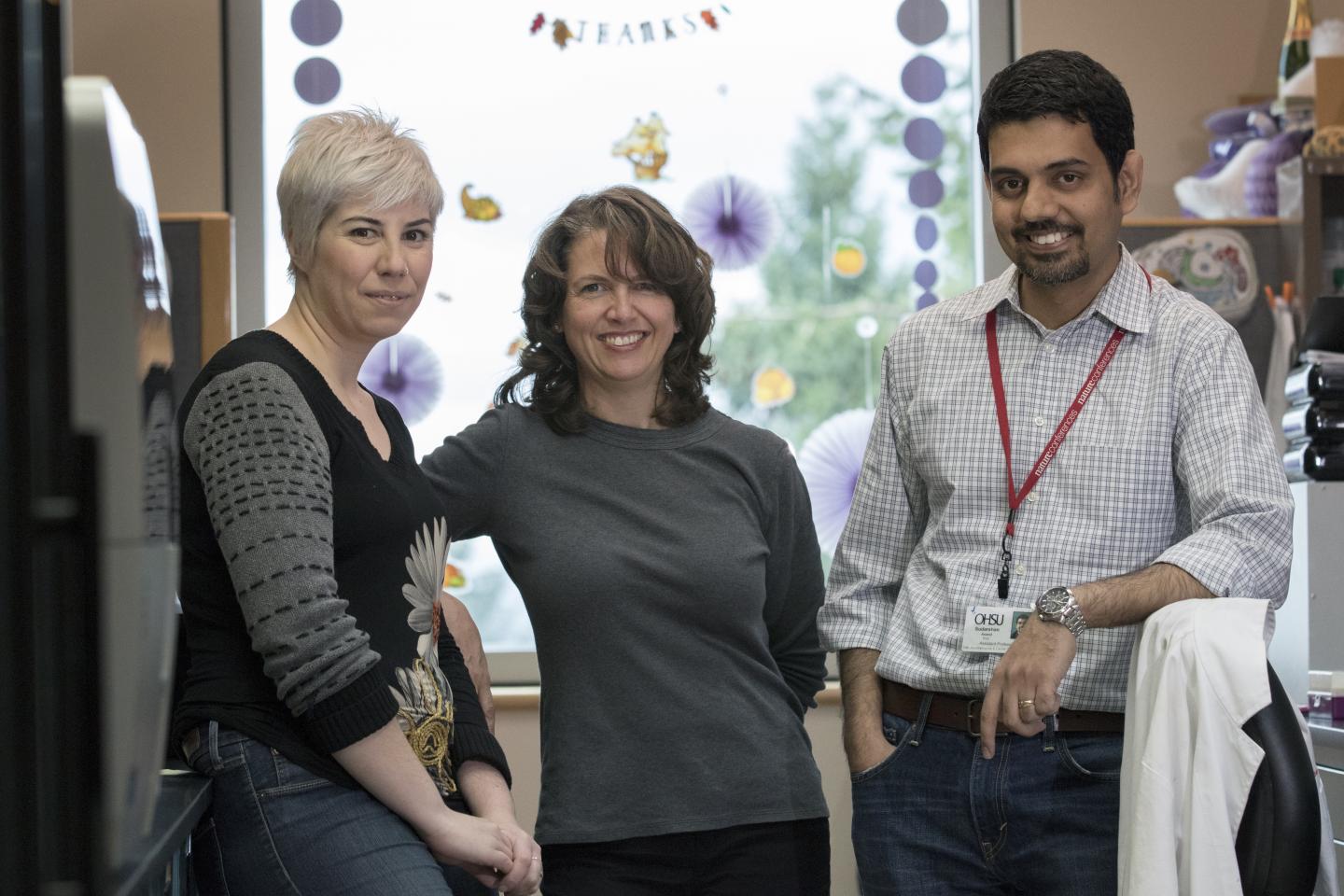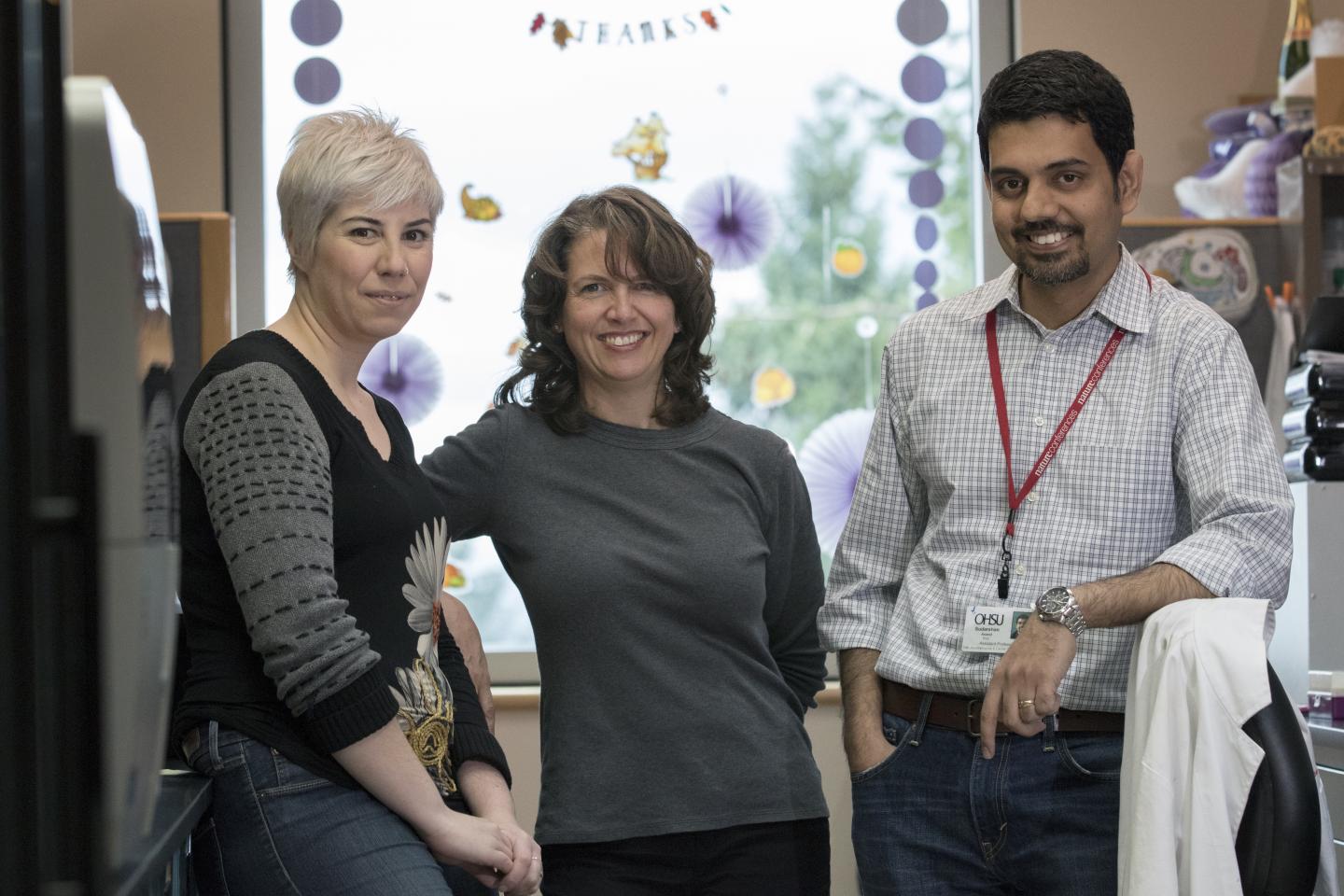
Credit: OHSU
OHSU researcher Sudarshan Anand, Ph.D., has a contemporary analogy to describe microRNA: "I sometimes compare MicroRNA to tweets — they're short, transient and constantly changing."
Because microRNA is dynamic, it makes for a compelling target for cancer research.
Anand, an assistant professor of radiation medicine in the School of Medicine and member of the Knight Cancer Institute, teamed up with a group of researchers to take a closer look at microRNA in the context of the tumor microenvironment.
Their findings, published in Nature Communications, provide early evidence that a panel of microRNA may be used in the future as a biomarker for several types of cancer. Using a mouse model, Anand and colleagues demonstrated how microRNAs in the tumor microenvironment play a critical role in tumor progression and response to radiation therapy. With microRNAs, the team mimicked features of the autoimmune disease lupus within cancers to provoke an immune response.
This promising, early research may one day translate to human cancer radiation and treatment, and begs the question: Can we use microRNA biomarkers to influence cancer radiation? Anand and team believe it is a line of inquiry worth pursuing.
"Biology is such a random process," Anand says. "Two neighboring cells won't always act the same way, just like two people don't react the same way when they see the same event. We hope we will one day be able to read microRNAs and predict if a person's cancer is going to respond to radiation."
###
More information about this paper can be found on the OHSU Knight Cancer Institute's science blog, Cancer Translated.
This research was funded by: National Heart Lung Blood Institute (NHLBI)/NIH, grant R00HL112962, and the Barbara-Ann Miller Dive for the Cure Award from the OHSU Knight Cancer Institute.
About the Knight Cancer Institute
The Knight Cancer Institute at Oregon Health & Science University is a pioneer in the field of precision cancer medicine. The institute's director, Brian Druker, M.D., helped prove it was possible to shut down just the cells that enable cancer to grow. This breakthrough has made once-fatal forms of the disease manageable and transformed how cancer is treated. The OHSU Knight Cancer Institute is the only National Cancer Institute-designated Cancer Center between Sacramento and Seattle – an honor earned only by the nation's top cancer centers. It is headquarters for one of the National Cancer Institute's largest research collaboratives, SWOG, in addition to offering the latest treatments and technologies as well as hundreds of research studies and clinical trials. For additional information on the OHSU Knight Cancer Institute visit http://www.ohsu.edu/xd/health/services/cancer or follow us on Facebook and Twitter.
Media Contact
Amanda Gibbs
[email protected]
503-494-5640
@ohsunews
http://www.ohsu.edu
############
Story Source: Materials provided by Scienmag





